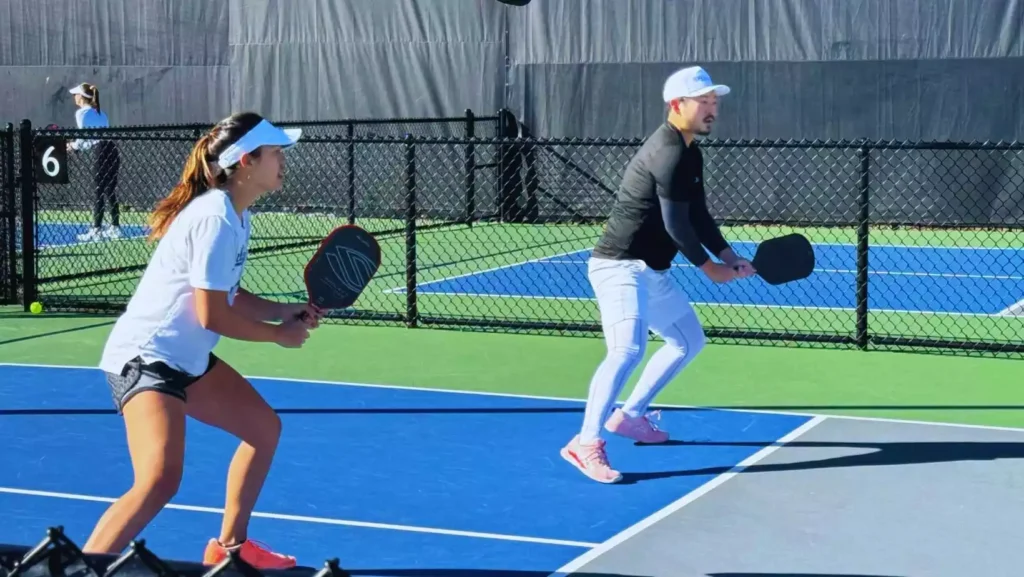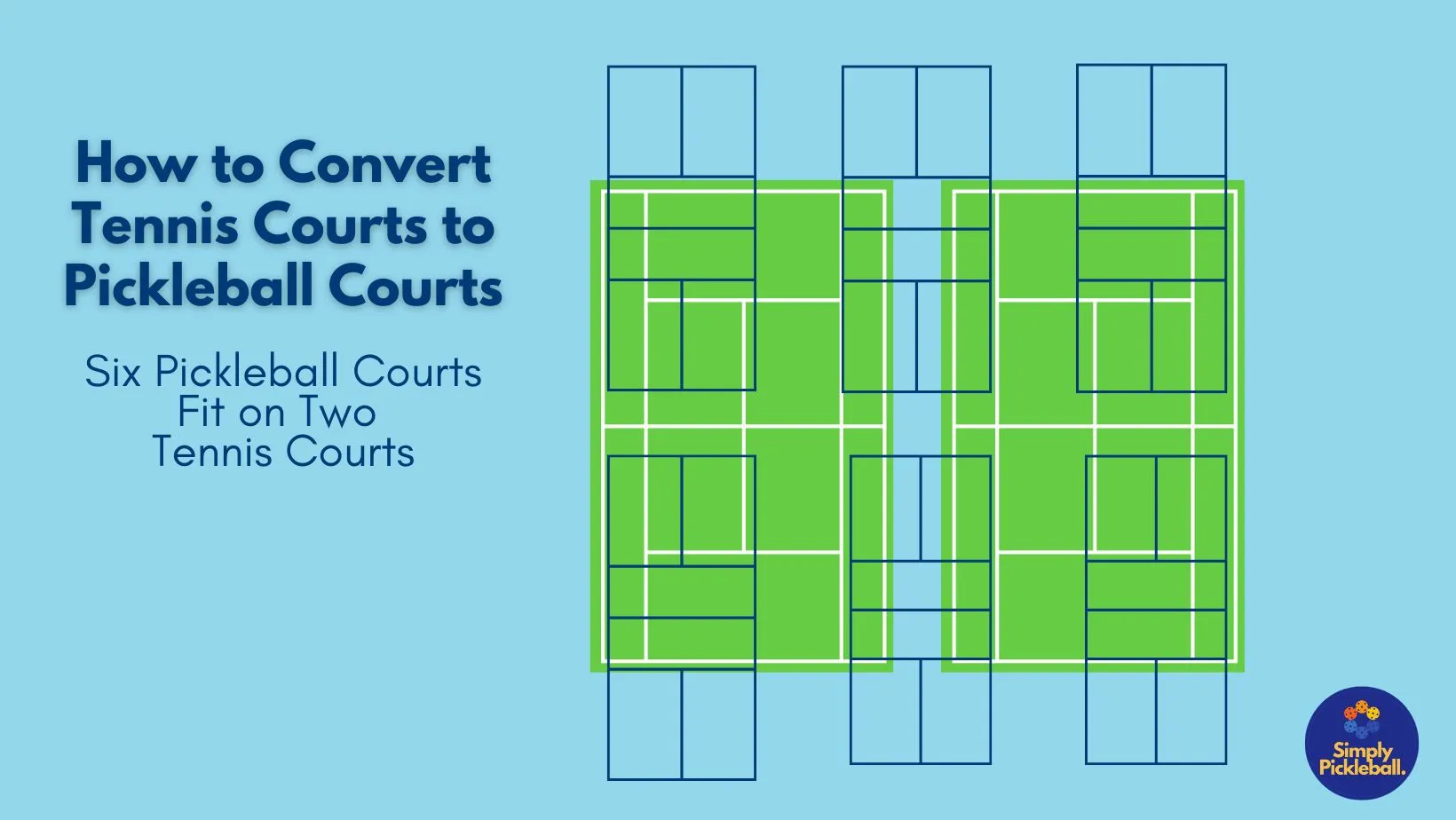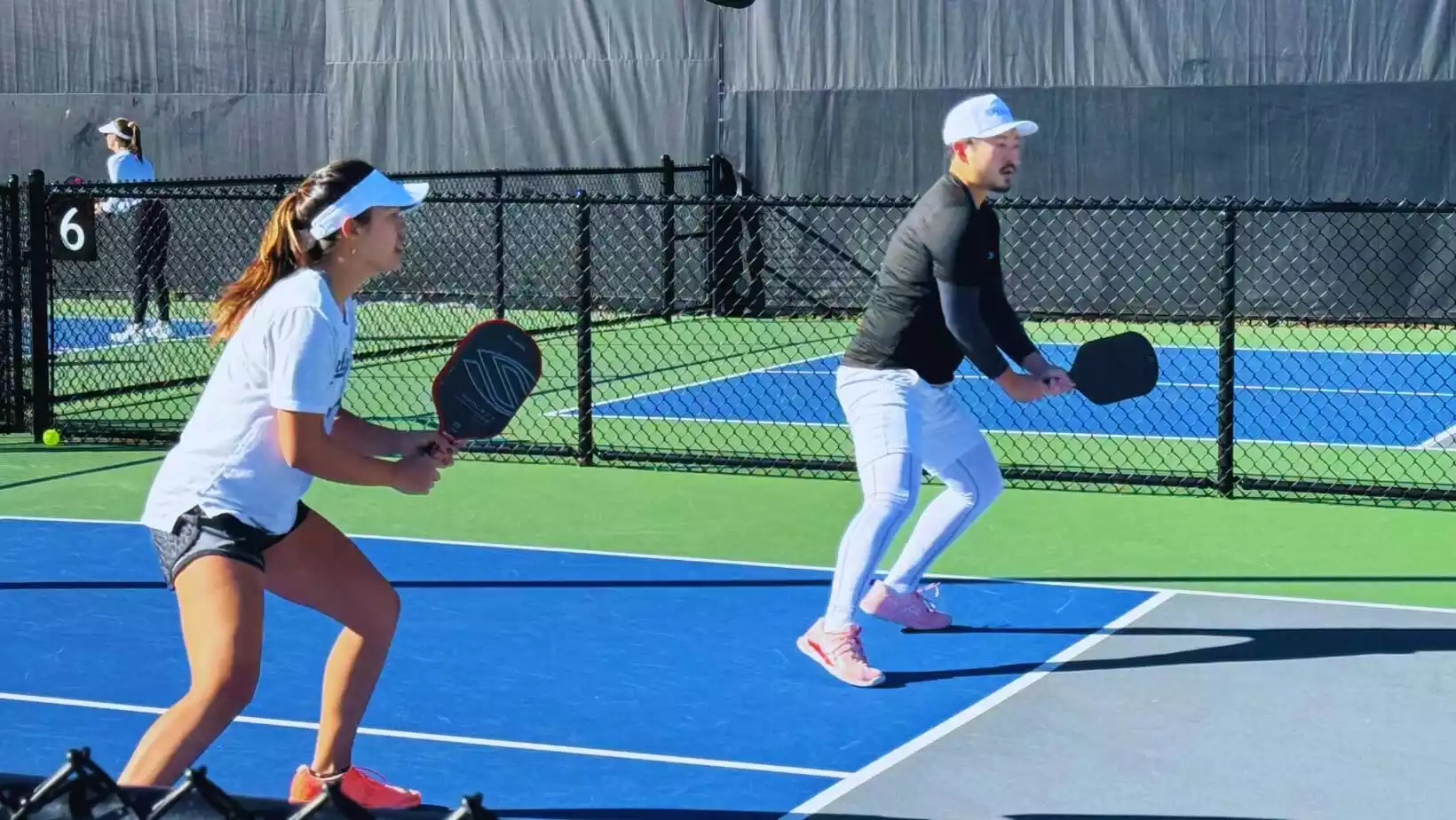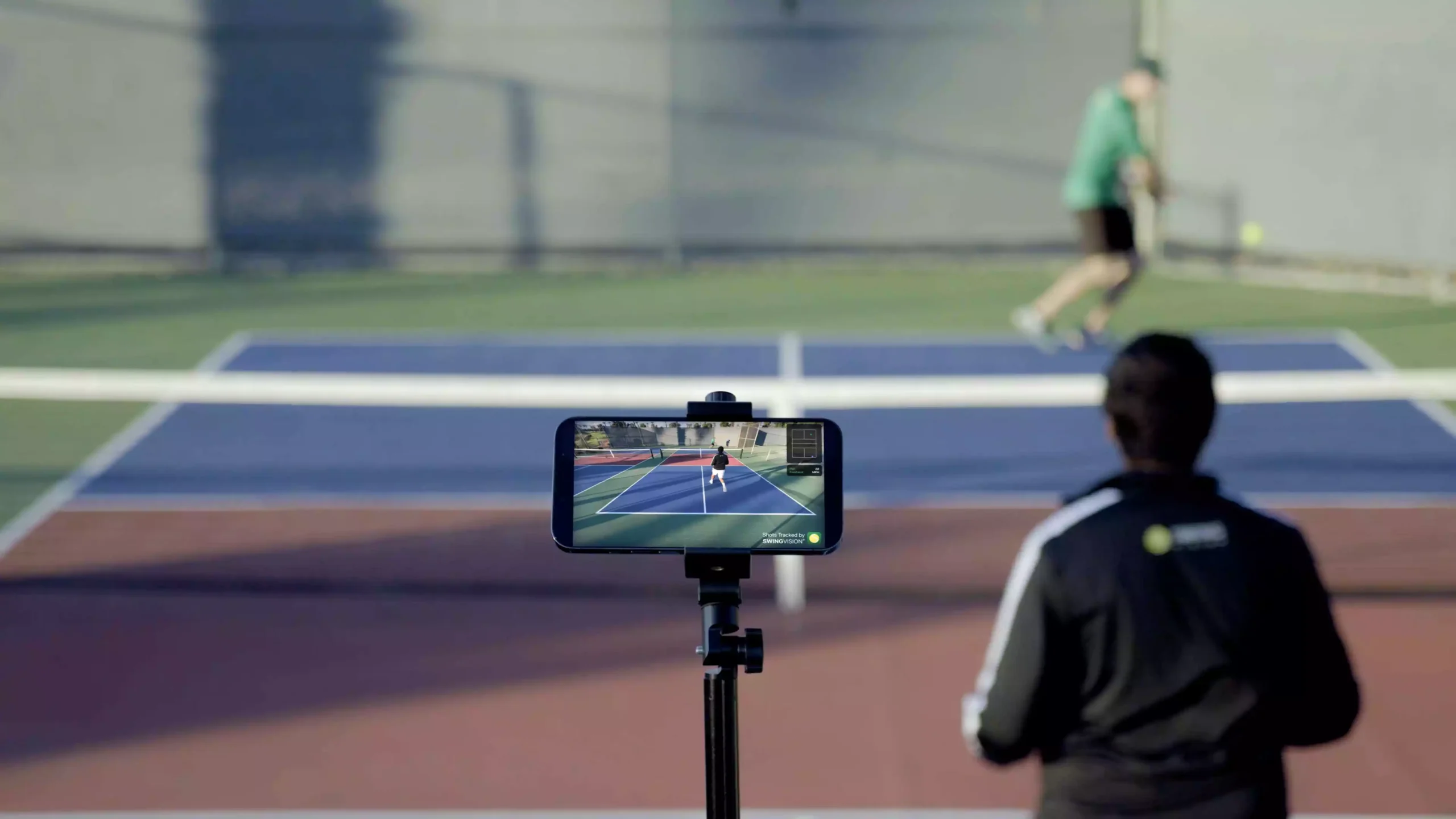Last updated on February 23rd, 2024 at 10:23 am
Looking to step up your pickleball game? As an intermediate player, you know the basics, but it’s the nuances that can make or break a match. In this article, we’ll dive into eight essential pickleball tips for intermediate players aimed at refining your on-court strategies, enhancing your shot execution, and fortifying your positioning. From perfecting your third shot drop to developing a diverse shot arsenal, these insights will give you the competitive edge you’re looking for.
Do you need to upgrade your paddle? Check out our recommendations for The Best Intermediate Pickleball Paddles.
Key Takeaways
To excel at the third shot drop, players should aim for soft, low shots that land close to the net in the non-volley zone and follow up with a strong net position, focusing on technique, footwork, and positioning for consistent execution.
Positioning around the non-volley zone, or kitchen line, is critical for strategic advantage, requiring players to adopt a ready position, communicate clearly with partners, and stay versatile to handle various shots including lobs.
Building a diverse shot arsenal is essential for advanced play, emphasizing the need to master different serve types, varied shot placement, and the strategic use of drops, drives, lobs, and around-the-post shots for increased unpredictability.
Mastering the Third Shot Drop

Of all the pickleball tips for intermediate players, the third shot drop is the most important. A successful execution of the third shot drop entails:
Hitting a soft, low shot that lands in the non-volley zone.
Using proper technique to generate enough spin and control.
Aim for the ball to bounce close to the net, forcing your opponents to hit up.
Follow up the third shot drop by getting up to the net to maintain control of the point.
Practicing your drop shots is essential, as they can be a game-changer by allowing you to take control of the point and force errors from your opponents. Mastering the third shot drops can transform your game by providing an offensive edge and greater consistency, especially when utilizing shot drops effectively.
Executing a third shot drop involves a blend of skill, positioning, and mechanics. Guiding the shot with your shoulder, keeping your wrists tight, and hitting the ball in front of your body are key to avoiding errors in a drop shot and consistently hit shots with precision.
However, the success of a third shot drop highly depends on footwork. For difficult shots such as these, your footwork impacts both your positioning and mechanics. Quick and accurate movements are vital to delivering these game-changing shots.
Positioning for Success: The Non-Volley Zone

Shifting our focus to the non-volley zone – commonly known as the kitchen line – we find that this line holds significant importance for the serving team. It puts you in a beneficial position on the court, providing balance and aggression. This forces your opponents to anticipate shots quickly and potentially make errors.
To maximize your advantage, adopt a ready position at the kitchen line. This means holding your paddle in a 10:00 or 11:00 position, ready to block volleys towards your body and backhand side and cover forehand shots. Anticipating your opponent’s shots and being in the right position can make a significant difference in your ability to control the game from the non-volley zone.
One of the most important pickleball tips for intermediate players trying to advance is to keep their paddle up at the kitchen line. Remember, avoid touching the non-volley zone during a volley to prevent faults, although you can step into the kitchen to hit a bounced ball.
And let’s not forget the importance of communication. When you and your partner are near the kitchen line, clear communication ensures clarity on shot responsibilities. Leave the non-volley zone to strategically respond to certain shots like lobs and maintain control of the game.
Crafting Superior Shot Placement
Shot placement deserves our attention next. It involves more than just hitting the ball – it’s about the precise location and method of your shot. By varying pace and adding spin, you can disrupt your opponent’s rhythm, making it harder for them to anticipate and effectively respond to your shots.
How can you do this? Aim for specific and strategic locations on the court. This could be targeting the opponent who is farther back or aiming at your opponent’s feet. These tactics exploit their positioning and generate difficult returns.
In pickleball matches, strategic shot placement can put your opponents under pressure, increasing your chances of winning rallies.
To enhance shot placement, target your opponent’s weaker side, typically the backhand, and add power and speed to your shots. This increases the difficulty of their return. Additionally, mastering a broad variety of shots, such as lobs, drives, and spin shots, aids in adjusting to your opponent’s play and maintaining an edge in the game.
Add Variety to Your Serves

In a pickleball game, the way you serve and return can dictate the match’s tempo. For instance, a deep serve can force your opponent into a weaker return, giving you a strategic advantage. Especially a deep serve to the backhand can be particularly effective. To improve your game, consider incorporating these pickleball tips into your strategy.
But don’t stop at deep serves. Add variety to your serves with techniques such as:
drop serves
hook serves
lob serves
power serves
This variety makes it challenging for the opposing team to predict and return the ball effectively.
Of course, a good serve is about more than the shot itself. Your stance, grip, and consistency all play a role. Here are some tips to improve your serve:
- Use an athletic stance to engage your core and leg muscles.
- Maintain a consistent underhand motion at waist level.
- Focus on power and accuracy.
- Return serves down the middle or to your opponent’s weak side to limit their offensive control.
The Art of the Dink

In the realm of pickleball, the act of dinking is considered an art form. This skill differentiates intermediate pickleball players from beginners, granting you the ability to control the tempo and exert strategic pressure. But dinking is not just about hitting the ball; it’s about making mindful decisions and exploiting your opponents’ impatient moves. Improving your dink game is crucial for advancing your pickleball play, as it adds depth to your strategy and helps you maintain control during rallies. As an intermediate player, mastering this technique can elevate your game to new heights.
To master this skill, you should mix up the placement of your dinks. You can do this by using crosscourt, down the line, and placing the ball at your opponent’s feet to remain unpredictable and maintain an advantage. A well-executed dink should reach its highest point on your side of the court and land in the opponent’s non-volley zone, remaining unattackable.
In the case of aggressive dinks from your opponents, respond with defensive dinks that keep the ball low and difficult to attack. Don’t forget to communicate effectively with your partner during dink exchanges, especially to handling balls directed down the middle of the court.
Ready Position: Your Defensive Anchor
Your defensive anchor on the pickleball court is the ready position. This stance involves keeping your feet shoulder-width apart, knees slightly bent, and your paddle raised and in front of your body. By mastering this position, you’ll become quicker and lighter on your feet, facilitating swift ball strikes and maintaining control during play.
But the ready position is not about being stationary. Instead, you need to maintain an active and dynamic stance, keeping your paddle up and actively tracking the ball to ensure you’re prepared for prompt shot execution.
When it comes to grip, a comfortable paddle grip such as the eastern grip and maintaining a balanced position with the paddle up allows for quick transitions between forehand and backhand, especially from the baseline.
At the kitchen line, keep your paddle in front, but at the baseline, a neutral position is favored due to more time available to adjust for shots at an intermediate level.
Pickleball Tips for Intermediate Players: Dynamic Footwork
Skilled play is rooted in proficient footwork. Efficient movements prepare you optimally for your next shot and facilitate effective weight transfer to improve shot execution. At any skill level, larger steps help maintain balance and allow for the correct rotation of hips and shoulders, keeping your weight centered and steady.
Proper footwork techniques and understanding body language, such as staying in motion near the kitchen line, minimizing backswings, and choosing between lateral moves or taking a step back, are essential in various playing scenarios, from volleys to dinks.
To enhance your agility and court readiness, choose comfortable, supportive shoes. Combine this with a forward-facing square body position and shuffling on your toes.
Developing a Diverse Shot Arsenal
Developing a diverse shot arsenal is key to becoming an unpredictable player that keeps opponents on their toes during the match. How can you achieve this? Practice shots like the third shot drive and around the post (ATP). These can add strategic variety to your game, making it challenging for your opponents to read your play patterns.
Continuous practice and refinement of a wide range of shots, including backhand shots, ensures that you can respond adeptly to diverse situations in a match. Remember, a diverse shot arsenal requires good footwork, ready positioning, and superior shot placement, all of which we’ve covered in this blog post.
Summary
To summarize, becoming a competitive pickleball player requires mastering a variety of techniques and strategies. From the third shot drop to holding the kitchen line, from crafting superior shot placement to elevating your serve and return game, and from mastering the art of the dink to adopting a dynamic ready position, there’s much to learn and practice.
But remember, the journey to becoming a formidable pickleball player is not just about learning new techniques. It’s also about refining and diversifying your shot arsenal, improving your footwork, and constantly evolving your game. Additionally, being aware of and avoiding common pickleball mistakes, such as poor positioning and predictable shot selection, will help you progress faster.
So, keep practicing, stay focused, and most importantly, enjoy the game!
Frequently Asked Questions
How do you improve an intermediate pickleball player?
To improve as an intermediate pickleball player, focus on consistent warm-ups, staying ready, mastering backhand shots, concentrating before hitting, delivering deep serves and returns, aiming at the opponent’s feet, targeting the weaker opponent in doubles, and returning serves down the middle. With continual practice and focus on these pickleball tips for intermediate players, you can elevate your skills.
How do beginners get better at pickleball?
To improve at pickleball, beginners should focus on mastering the fundamentals and keeping it simple, maintain proper court positioning, and invest in quality equipment. These strategies will help improve their game and performance on the court.
What is the intermediate level in pickleball?
Intermediate level in pickleball, categorized as Level 3.2 – 3.8, requires a strong understanding of the game rules, consistent serving, deep returns, and strategic play during games. It is essential to demonstrate a broad knowledge and skill set at this level.
How do you move better in pickleball?
To move better in pickleball, work on your footwork by practicing quick and agile movements, getting in position to hit the ball, and recovering to the center of the court. Additionally, focus on improving your serve to gain an advantage in the game.
What is a third shot drop in pickleball?
A third shot drop in pickleball is a soft, low shot that lands in the non-volley zone, making it hard for the opponent to volley and setting up an offensive court position for the serving team.
Join thousands of fellow pickleball players from around the world. Subscribe today!








